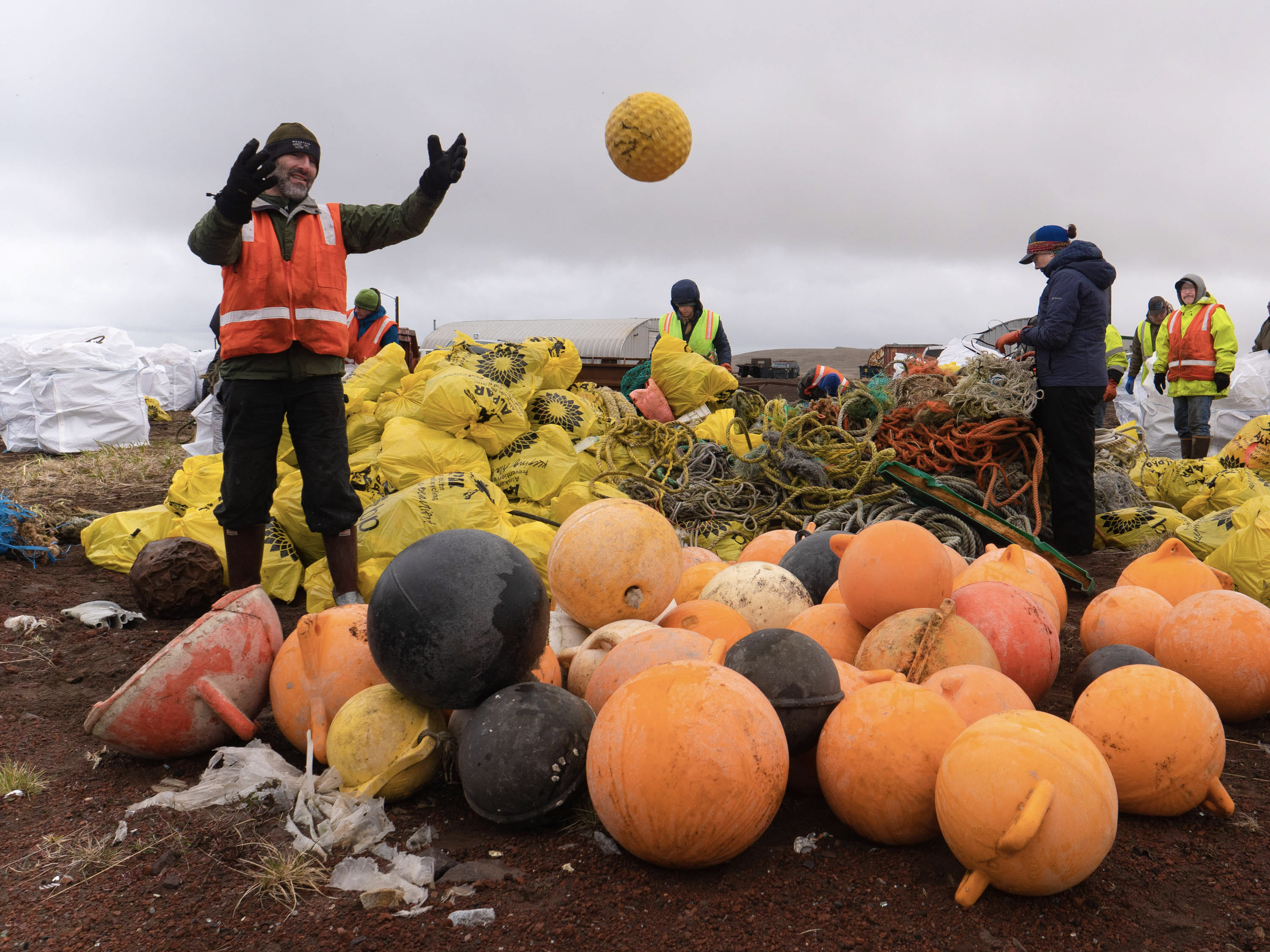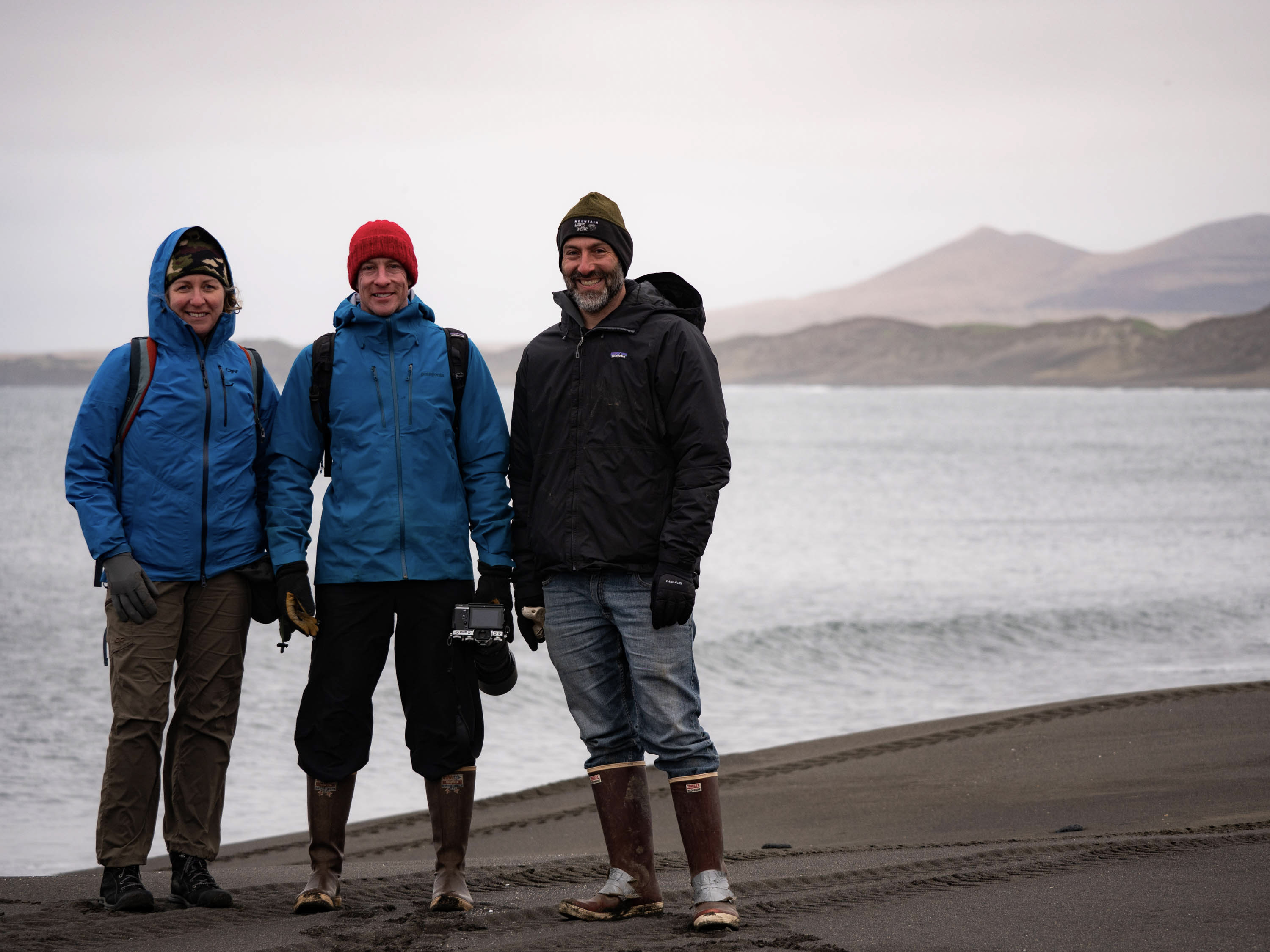Hard Work, Partnership and Nearly 10 Tons of Trash
Published by Ocean Conservancy
Our Ocean Conservancy team—Andrew Hartsig, Patty Chambers and me—recently returned from a week-long trip to St. Paul Island to help with a marine debris cleanup that removed almost 20,000 pounds of trash. This cleanup was the second in which Patty and I have participated on St. Paul and my third time to the island. Both Patty and I were very excited to return to St. Paul and to support the cleanup effort, which is a priority of the community, in partnership with the Aleut Community of St. Paul Island, the Central Bering Sea Fisherman’s Association and Trident Seafoods.
The Pribilof Islands are a unique place on the planet. They are at the center of the Bering Sea, one of the most important and productive ecosystems in the world, and they are home to fur seals, birds and two communities that depend on those resources. The islands also accumulate a staggering amount of marine debris. Since 2003, cleanups on the two inhabited Pribilof Islands, St. Paul and St. George, have removed more than 300,000 pounds of trash. More than 80% of this debris was fishing gear—line, net, buoys, floats and other plastic—almost none of which originates on the islands.


This year, we worked with partners and community members to pick up nearly 20,000 pounds of debris. As in past cleanups, the debris was mostly lost fishing gear.
A few things really stood out to Andrew, Patty and me. First, of course, was the sheer volume of debris on these remote beaches. It’s difficult to imagine 20,000 pounds of anything. It’s equivalent to the weight of roughly four hippopotamuses or nearly 10 walruses. Or several pickup trucks. Now imagine it spread over miles of rocky shoreline in pieces that range in size from balls of line weighing hundreds of pounds to chunks of foam smaller than your thumb.
Now, consider trying to pick all of that up. By hand. That is the second thing that stood out to us: the hard work and commitment it took to make this happen. The cleanup was organized and led by the Aleut Community of St. Paul Island, and the crew included their staff, 11 community members and our Ocean Conservancy team. Each morning, all 19 of us would gather at the tribal office and head out to the cleanup site for the day. Once on the beaches, we walked and pulled, tugged and cut line and net; carried buoys, buckets and other big pieces of plastic; and filled bags with smaller debris.
Each piece of debris was handled multiple times before being securely packaged at the local landfill, where it won’t have the chance to spill back into the environment. First, it was picked up off the beach and piled up on the bluffs. Then two four-wheelers were used to transport the smaller piles into larger piles. Debris from the larger piles was loaded into the back of pickup trucks and driven to the landfill where it was unloaded into even bigger piles. The larger piles were then sorted into 100 giant cube-shaped sacks (for line, net, plastic, etc.). Each sack was weighed, and all of the data was carefully recorded.
It was a lot of work…and very little of the trash we picked up originated in St. Paul. The currents and other oceanographic features make St. Paul a hotspot for ocean-borne debris. For example, the beaches of St. Paul accumulate lots of driftwood, even though there are no trees on the island or within hundreds of miles. Jokingly, some community members refer to a bush by one of the old buildings as “the forest.” Still, enough wood ends up on St. Paul that some houses are equipped with wood stoves. The amount of driftwood is testament to the ocean forces that converge there, bringing debris from faraway places.


Although the work was tiring, it was also extraordinarily rewarding. We could look back at the shoreline and see the direct results of our efforts. And, we enjoyed being part of a team, all committed to the same goal, and all working together to achieve it. If you want to hear one of the crew members talking about his job fishing for halibut, listen here.
It was also sobering to know that the currents will bring more and more debris to these shores. We are hoping to continue to expand our work with the tribe, fishing industry and others to tackle this problem. If all goes well, Ocean Conservancy will be back next year, this time working on both St. Paul and St. George. We’ll spend some time measuring the rates at which debris accumulates and tracking its sources to help target future cleanups and work toward policy changes that will prevent this problem in the first place.
Marine debris cleanups are incredibly valuable for St. Paul. Unfortunately, though, trash is not the only threat to our wildlife. In 2016, we saw mass die-offs of puffins on our island. A study in which I participated concluded that thousands of puffin deaths were most likely attributable to a lack of food that was caused by climate change and occurred when the birds were molting and, therefore, unable to fly. We also know that birds also ingest plastic and can be injured or die from the negative impacts of consuming plastic—hopefully we can find ways to address the threats faced by puffins and our other animals. —Lauren Divine, Director of the Ecosystem Conservation Office at the Aleut Community of St. Paul Island


Sign up for our emails!
The post Hard Work, Partnership and Nearly 10 Tons of Trash appeared first on Ocean Conservancy.
Read the full article at: https://oceanconservancy.org/blog/2019/06/10/hard-work-partnership-nearly-10-tons-trash/


